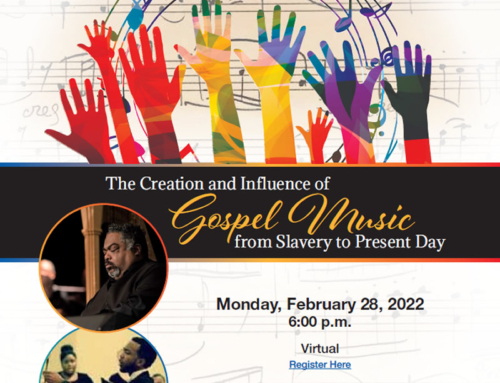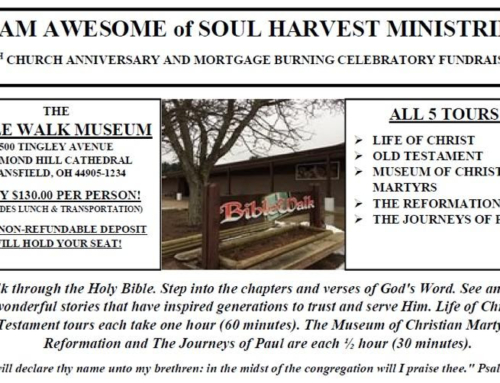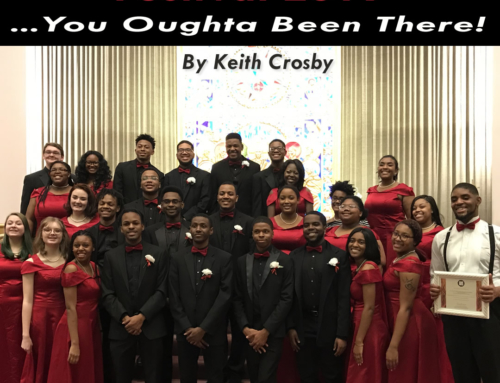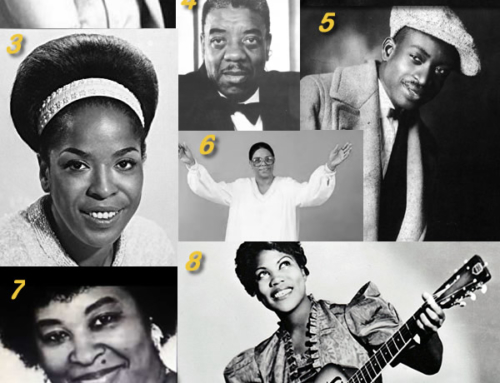Gospel History Spotlight Archive
Spotlight On: Doris Akers
National gospel composer and vocalist, Doris Akers, was born in Brookfield, Missouri on May 21, 1923.
Akers began playing the piano at six and wrote her first song, “Keep The Fires Burning In Me,” at the age of ten. In the 1940’s she moved to Los Angeles and sang with the Sally Martin Singers and later formed her own gospel group, the Doris Akers Singers.
Some of Akers’ best known works include, “Sweet, Sweet Spirit,” “Sweet Jesus,” and “I Cannot Fail The Lord.” In addition to her success as a composer, she was also a recording artist, music arranger, and choir director. She founded the Sky Pilot Choir and co-wrote “Lord Don’t Move The Mountain” with long-time friend Mahalia Jackson.
Before her death in 1995, Akers received numerous awards and accolades including being honored by the Smithsonian Institute, which recognized her compositions and recordings as “National Treasures.”
Spotlight On: Thomas A. Dorsey
Have you ever wondered where the name “Gospel Music” originated? Prior to the 1940’s, the music of the Black church was more commonly referred to as “Spirituals,” “Jubilees,” or “Anthems. With the zeal of a missionary, Thomas Dorsey set out to change the terminology of the Negro church for good.
Thomas A. Dorsey was a former blues musician, who accompanied popular blues singer Bessie Smith, and a P.K. (Preacher’s Kid). Returning to his first love after World War II, Dorsey began writing religious music. Dorsey’s compositions are some of the most beloved in the church today, including his classic, Precious Lord, Take My Hand.
Not just a gifted composer, Dorsey was also a savvy businessman and the first black man in America to start a black-owned music publishing company. Through his company he wrote songs, published his own music, and secured the rights to other songs, publishing them as well. His business partner, singer Sallie Martin, traveled across the country performing Dorsey’s songs and selling song sheets to black churches.
Dorsey’s songs have stood the test of time, and it is his distinctive writing style that has set the tone for the majority of Black church choirs today. Dorsey believed that his music was not just an evolution, but a revolution from the days of slave songs and Negro spirituals. He insisted that his modern form of black religious music should be called “Gospel”. Dorsey’s popularity, zeal, and gifts of persuasion put “Gospel” into the music lexicon.
As if Dorsey’s music and his gift of “Gospel” music to the world weren’t enough, Dorsey was also the first black gospel music concert promoter. Although this caused much controversy within the church, he was the first to not only advertise religious concerts, but charge admission to see them. His first concert promotion on record was the Fisk Jubilee Singers. Today’s gospel music industry owes its origins to the work of Thomas A. Dorsey.
Spotlight On: Dr. Walter Hawkins
Gospel legend Dr. Walter Hawkins was born on May 18, 1949 in Oakland, CA.
Hawkins’ musical debut occurred as part of the Ephesians COGIC youth choir directed by older brother, Edwin Hawkins. The choir released an album (to be sold locally) entitled, “Let Us Go Into The House of the Lord,” in 1968, to raise money to attend a convention in Washington, D.C. The Lord had greater things in store for the choir, however, as a single from the album, “Oh Happy Day,” became a pop music hit the following year, selling over 1 million copies.
Later Walter Hawkins entered the ministry and in 1973, founded the Love Center Church in Oakland, CA. His first album with the Love Center Choir, “Going Up Yonder” sold over 300,000 copies and spent 3 years on Billboard magazine’s Gospel Top 40 chart.
In 1978, Walter Hawkins released “Love Alive II,” in 1985, “Love Alive III,” and in 1989, “Love Alive IV.” Each album received numerous nominations and awards and together sold over 2 million copies.
In addition to his own music, Dr. Hawkins has collaborated with a growing list of top artists, musicians and songwriters. Today Dr. Hawkins continues to minister through music and message and is quick to point out that his music and ministry go hand in hand with spreading the good news of Jesus Christ.
Spotlight On: Tessie Hill
(Taken From The Liner Notes of “I Must Tell Jesus”)
Tessie Hill was born in Monroe, GA, the third of six children. At the age of eight, her family moved to Detroit where she sang in the church choir at Polk Street Church of God in Christ.
The minister of music at Polk Street COGIC sent a demo of the choir, with Hill on lead vocals, to Savoy Records in the early 60’s. The Savoy executives were so impressed that they signed the choir. Eventually Hill pursued a successful solo career and went on to record a string of hits in the mid-70’s including “(He Keeps Doing) Great Things,” and “Don’t Forget to Remember.” In 1978 Record World magazine named Tessie Hill its “Top Female Gospel Artist.”
Spotlight On: Langston Hughes
Langston Hughes was born on February 1, 1902, in Joplin, Missouri. He grew up mainly in Lawrence, Kansas, with his grandmother, the abolitionist Mary Sampson Patterson Leary Langston. Mary Langston’s first husband died at Harper’s Ferry, fighting alongside John Brown. Her second husband, James Mercer Langston, was the first African American elected to public office in 1855. Hughes also lived in Illinois, Ohio, and Mexico.
Langston Hughes had a great love of gospel music that led him to write several gospel musical plays including Black Nativity: A Gospel Song Play in 1961, Tambourines to Glory in 1963, and, inspired by the civil rights movement, Jericho–Jim Crow in 1964.
Black Nativity is one of Hughes’ most beloved works. The gospel-play is a colloquial retelling of the birth of Christ based on the Gospel of St. Luke. It is set to the traditional music of the Black church and delivers a powerful message of joy, hope, victory and liberation.
In all, Hughes wrote sixteen books of poems, two novels, three collections of short stories, four volumes of “editorial” and “documentary” fiction, twenty plays, children’s poetry, musicals and operas, three autobiographies, a dozen radio and television scripts and dozens of magazine articles. In addition, he edited seven anthologies.
Called the “Poet Laureate of the Negro Race,” it was Langston Hughes’ desire to represent the race in his writings. Black or white, Hughes’ literary genius cannot be denied.
Spotlight On: Sister Rosetta Tharpe
Sister Rosetta Tharpe was born Rosetta Nubin on March 20, 1915, in Cotton Plant, Arkansas. Tharpe began her singing career in the church choir and quickly became a solo singer. As a child Rosetta traveled with her mother, evangelist Katie Bell Nubin and her singing routinely “tore up” the church. While the music of the church was her first love, she was influenced by blues singers and musicians, and by the age of six she had mastered the guitar.
By the late 1930s she was a popular performer at sacred and secular functions, and was one of the first successful “crossover” artists, easily making the transition between gospel and jazz. She was featured at John Hammond’s “Spirituals To Swing” concerts at Carnegie Hall where for the first time, black gospel music was brought to a white audience. Tharpe also worked at the Cotton Club with Cab Calloway. In the early 1940s she spent a year with the Lucky Millinder band, recording several best selling songs that included “I Want A Tall Skinny Papa” and “Trouble In Mind”. Rosetta Tharpe’s recordings reportedly influenced not only Elvis Presley, but other rockers including Jerry Lee Lewis with his blend of hillbilly, blues and gospel.
In 1939, LIFE magazine ran a featured article on Tharpe in which she was described as “moving the saints on Sunday and entertaining the big spenders on Monday”. Like the gospel artists of today, Tharpe was also a savvy businesswoman. In 1951, her third marriage to manager Russell Morrison was an event attended by 25,000 paying guests. “The wedding culminated in a $5,000 fireworks display including a 20 foot representation of her with her guitar”.
In spite of her success in the world of secular music, she eventually returned to her gospel roots. She continued to record and her duets with fellow gospel singer Marie Knight are classics. Later in her career, she continued to sing in churches but returned regularly to the jazz scene, making successful tours of Europe with Chris Barber and others in the 1950s and 1960s.
In the 1950s Mahalia Jackson replaced Tharpe as gospel’s biggest star. Following a stroke, Sister Rosetta Tharpe died on October 9, 1973, at the age of 58 in Philadelphia, PA.
Spotlight On: Thomas A. Whitfield, Jr. (“The Maestro”)
 Detroit Gospel.com featured artist, Byron Cage, says that the late Minister Thomas Whitfield, Jr. was his mentor and taught him everything he knows about praise and worship. Others, including Yolanda Adams and Fred Hammond, freely credit him as a key person in launching their careers. Detroit Gospel.com’s gospel history spotlight shines on the legendary Minister Thomas A. Whitfield, Jr. .
Detroit Gospel.com featured artist, Byron Cage, says that the late Minister Thomas Whitfield, Jr. was his mentor and taught him everything he knows about praise and worship. Others, including Yolanda Adams and Fred Hammond, freely credit him as a key person in launching their careers. Detroit Gospel.com’s gospel history spotlight shines on the legendary Minister Thomas A. Whitfield, Jr. .
Thomas Whitfield, Jr. was born April 30, 1954, in Detroit, Michigan. He was a renowned psalmist, singer, director, keyboardist, arranger, producer, composer, and gospel music legend affectionately referred to as “The Maestro.”
In his all too brief time here, Minister Whitfield left an indelible mark on the canvas of gospel music. He was possibly second only to James Cleveland as one of the greatest and prolific gospel music composers of all time. During his lifetime, Whitfield was nominated for three Grammy Awards. In 1999, Thomas Whitfield and the Whitfield Company were inducted into the Gospel Music Hall of Fame. Though Whitfield is no longer with us, his music is still ministering through the many gospel artists who continue to record his classic songs, such as “Nothing But The Blood,” “Soon As I Get Home,” “We Need A Word From The Lord,” and so many more.
Thomas Whitfield was taken home all too soon on June 21, 1992, at the age of 38.
The Whitfield Company, founded by Thomas Whitfield, Jr. in 1977, continues to be a viable force in the gospel music industry, made up of the same voices “handpicked” by Thomas Whitfield 17 years ago. The group is still touring and is preparing to record again soon. The Whitfield Company has been the recipient of numerable awards and “is committed to living up to a legacy of a man that transcended gospel music.” Their last highly anticipated and well received project was “Still” on The Crystal Rose label. Click here to purchase “Still” by The Whitfield Company on Amazon.com.
Thomas Whitfield’s legacy also lives on in his brothers’ music ministry, The Whitfield Music Group, founded by Larry and David Whitfield. Thomas Whitfield’s talented brothers are musically gifted in their own right. The Whitfield Music Group’s vision is to reach the ears of many who are lost to share the Gospel through song. Along with their musical director, Demetrius “Krayon” Nabors, the group has recently released, “This Time,” an inspiring and upbeat mix of contemporary and traditional style gospel music. Look for a profile on and interview with The Whitfield Group on Detroit Gospel.com in the next few weeks.
“This Time” by The Whitfield Music Group is available at God’s World in Detroit and on CDBaby.com.





